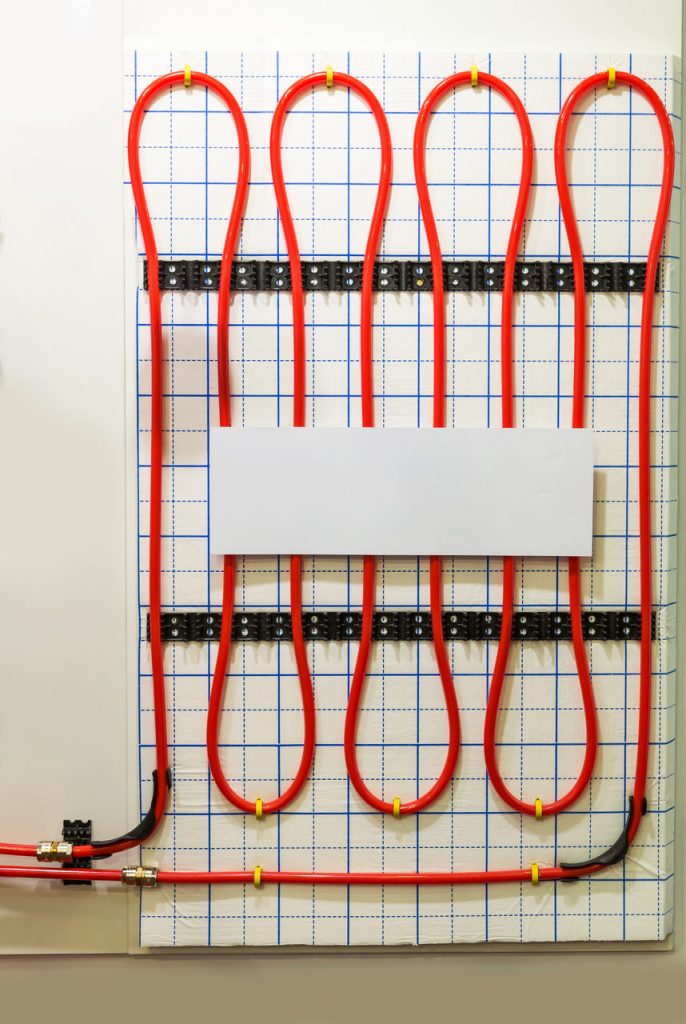The popular underfloor heating is increasingly being replaced by wall heating. Surface heating systems of this kind are becoming more and more popular. How does wall heating work?
Wall heating is a surface system, in which heating elements (pipes) are built into walls and heat the interior by emitting heat. Similarly to underfloor heating, wall heating system is installed with higher efficiency and better temperature distribution in the room, which significantly improves comfort of its users.

With wall heating we do not face the problem of thermal resistance, as in the case of underfloor heating, where the heat supply can be blocked, for example by a thick carpet. Additionally, the risk of damaging the floor also disappears – in case of wooden floors, which under the influence of heat may start to crack over time. In wall heating we can use higher supply temperature and the thickness of plaster covering the pipes is thinner than in case of concrete in underfloor heating – therefore wall heating is able to provide more heat in the room. What’s more, with this type of heating system, the heat spreads out gently without causing dust and allergens to rise. It is therefore particularly beneficial for people with allergies
In wall heating the temperature is distributed differently than in underfloor heating, where the heat is distributed from the bottom. Experts point out that underfloor heating provides heat distribution best tolerated by human body, where it is warmest at feet and slightly cooler at head height. With wall heating, heat is distributed evenly across the entire surface of the wall, so you feel the same temperature at every height of the room.